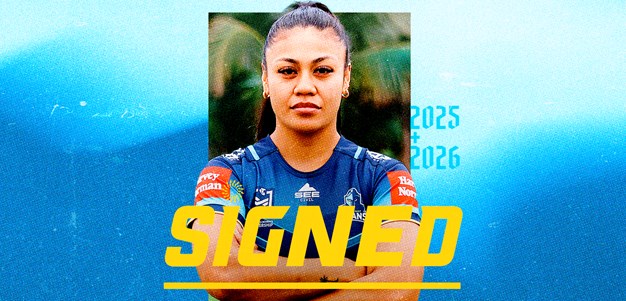
A year after the six-again rule was successfully introduced in a bid to speed up the game and punish cynical play, the NRL has doubled down.
The six-again concept has been expanded, one of a raft of new rules for the 2021 Telstra Premiership.
But how successful will these new rules be? This week's For & Against takes a look at the topic.
Will new rules make the game even better?
For – Paul Zalunardo (NRL.com journalist)
If the impact isn't felt on the field when rules are altered, the process has been a failure.
So, when the power brokers at Rugby League Central settled on changes designed to speed up the game they wanted a different product.
How the best players exploit eyes-up footy
Those rule changes were given their first extended test during last weekend's trial matches and the results were evident. The games looked faster and stoppages were down.
Expect to see the same in round one when six-agains are given for inside the 10 and a play-the-ball takes place when a player, or the ball, goes into touch.
The addition of a six-again option for inside the 10 should have the most notable effect.
When combined with six-agains for ruck infringements, the number of times teams face multiple restarts to the same set looks set to rise.
The changes around when trainers stop the game and Bunker reviews after tries should also result in less idle time during matches.
Episode 1 - Footy returns for 2021
The additional emphasis on forwards remaining in the scrum until the ball is out will probably lead to more penalties and scrum resets if strictly enforced.
The two-point field goal for kicks coming from more than 40 metres out isn't expected to be sighted with any level of regularity – just like the 20/40 kicking rule.
Those fans, and players, who think the game will change too much should keep this in mind.
NRL coaches are smart people who spend countless hours looking at ways to bend rules to their advantage. This process will have started within hours of these new rules being announced.
Some coaches will want to slow things down, others may want to make it even faster. Time will tell.
Within weeks, the smartest coaches will have adapted their team's play to these rules and those who can't will be bemoaning their introduction.
Just as was the case when the four-tackle rule was introduced in 1967 and that was then extended to six, these changes will be absorbed into the game.
See you all back in a year or two when further tinkering takes place with the aim of doing nothing more than making the game more appealing to fans.
Rookie reflections: Stephen Crichton
Against – Martin Lenehan (NRL.com senior journalist)
If you thought the game was fast in 2020, buckle up for an even wilder ride as another batch of new rules are introduced.
The six-again rule was a great innovation last season and added to the spectacle for fans by cleaning up the ruck and cutting out cynical penalties.
It acted as deterrent to the third and fourth man coming in late and taking an attacker to the ground to slow down the play-the-ball – a tactic that had become a blight on the game.
It was widely agreed that the tweaks made in 2020 brought the little man back into the game and ensured only the fittest and most agile big men would be able to go the distance.
So why did the game need to get any faster?
Fatigue is one thing but do we really want to get to the point where players are so worn out they drop more ball, miss more tackles and have nothing left to give when the game is on the line?
"The main thing about the rule changes now is there's not much time to catch your breath, you're constantly on the go with the play-the-balls now once the ball goes out," Panthers halfback Nathan Cleary told NRL.com after his team's clash with the Eels.
Raiders hooker Josh Hodgson, in his first game back from an ACL injury, said "I felt like there weren't really many chances to get that break that you're used to getting more often than not, if the ball went into touch and you got that time to pack a scrum and you'd catch a breather there".
Under the new rules, play will resume with a play-the-ball rather than a scrum when the ball is kicked or carried into touch, so breathers are fast becoming a thing of the past.
Plenty of people would be happy to see scrums disappear completely but we have to be careful not to destroy the fabric of the game.
There has to be room for the big man with a big motor, not just a team full of 85kg athletes who have the endurance to run for hours but lack the subtlety and ball-skills of the 110kg front-rower.
As for the other changes, the two-point field goal has the potential to turn the last 10 minutes of a game into a long range shootout if a team trails by two points.
Rather than go for a try to steal a win we'll see teams firing off field goals from outside 40m in an attempt to force the game into extra time.
Incessant shots at field goal have become a blight on golden point extra time so the last thing we need is more shots during regulation time.
Here's hoping coaches discourage the long range field goal for fear of giving up a seven-tackle set and gifting the opposition field position in the next set.
The views in this article do not necessarily express the opinions of the NRL, ARLC, NRL clubs or state associations.








